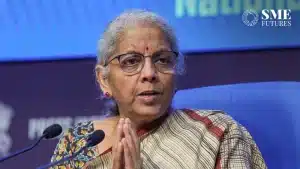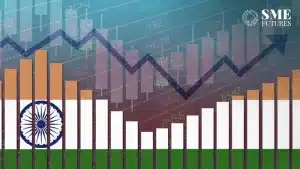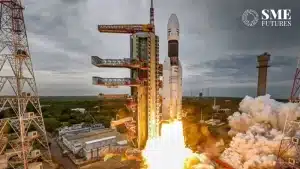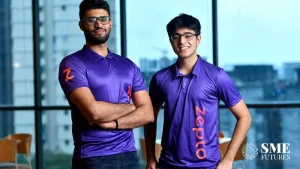The pandemic has had an adverse impact on the whole world. Indian MSMEs have had to face the maximum brunt of it while battling insolvency. A lot of Indian MSMEs were able to innovate and adjust but many of them lost the battle for survival. There were some that managed to barely survive, and some that are still dealing with the consequences brought about by the steps that they had to take to fight the pandemic.
According to the most recent Meta Inc. survey of medium and small businesses, 23 per cent of Indian SMBs are still closed even as the Covid-19 pandemic has started to dissipate. Now, the current state of the economy, including the rising inflation, is the most difficult challenge for them.
As a result, the financial gap has widened.
According to a report by the RBI’s UK Sinha Committee, the MSME sector faces a credit gap of Rs 20-25 trillion (against Rs 22.3 trillion outstanding, as of August 2022). While banks have been the primary source of capital, MSMEs have been unable to cash out most of the time, as the process for obtaining funds is complex.
Also Read: How FMCG companies in India can beat the growing inflation
On the other hand, India is witnessing a push for financial inclusion with the advent of the new-age digital lenders. The policies and innovations that they have effected across the economic ecosystem seem like a viable solution for the most challenging problem—access to credit. In a conversation with SME Futures, Pushkar Mukewar, CEO and founder of Drip Capital, which offers trade financing solutions, highlights how greater inclusion can not only narrow the gap for the MSMEs but can also empower them for growth through innovation.
Edited Excerpts
What are the recent government policies that support India’s push for Inclusion, and which are the best ways to leverage them?
Most SMEs fail to transform into high-growth businesses due to limited access to credit, to technology and to the market. Fortunately, the Indian government acknowledges these hurdles and has launched several policies to make small businesses self-reliant.
For instance, the Raising and Accelerating MSME Performance (RAMP) scheme is aimed to provide credit, tech upgradation plans and market assistance. In addition, the CBFTE scheme can act as a helping hand for first-time exporters by providing technical and financial support for any challenge that they might face while operating in the global value chains.
For marketing-related assistance, SMEs can opt for the Procurement and Marketing Support (PMS) scheme to learn new strategies and initiatives to grow their businesses.
How to utilise credit as a tool for greater inclusion?
According to the Standing Committee Report, the credit gap in the MSME sector is estimated to be around Rs 20-25 lakh crores. Most banks require SMEs to pledge collateral against any credit request. In addition, most of these financial institutions also follow time-consuming and paper-intensive bureaucratic processes. Fintech companies, on the other hand, leverage new-age technology to assess risk and offer customized solutions to MSMEs.
Having said that, fintech or banks cannot solve this problem by working in silos. Both these players need to work together. Traditional lenders have access to large fund pools and resources, while fintech has the technology to develop modern assessment models. Together, the ecosystem should innovate and bridge the financing gap.
Also Read: How ONDC can transform lifestyle retail in India
Innovation, going digital and leveraging technology, how can the three in combination empower growth for the MSMEs, thereby providing a boost to the push for inclusion?
A digital-first approach allows MSMEs to operate efficiently and enables them to provide detailed insights about their businesses with a simple click. Investing in new-age tools and features like process automation, inventory management solutions, and predictive analytics, to name a few, will allow MSMEs to scale sustainably.
Moreover, this also helps fintech companies to assess the overall health of businesses based on key data points and enables them to provide speedy credit solutions to SMEs with minimum human intervention.
What challenges does rural India generally pose for fintech?
Most MSMEs are either unaware of alternate financial lenders or sceptical about their services due to limited financial knowledge and lack of faith. Hence, the regulators and the fintech companies need to promote and educate MSMEs about alternative financing solutions and build trust among the people.
At Drip, we aim to make global trade easy and simplify trade finance for SMEs. We have strategic partnerships with export promotional councils, industry associations and FIEO and we regularly host events and webinars to discuss cross-border trade opportunities and working capital solutions for SMEs.
Also Read: People are switching to BNPL as its affordable and gets quality stuff
Through its ongoing campaigns and new initiatives, like blogs and newsletters on various fintech/trade-tech topics, Drip strives to be a knowledge hub that enables greater financial inclusion.
What’s the roadmap of Drip Capital for next year?
We have plans to build a trade facilitation platform by collaborating with key participants across the value chain for global networking. Besides this, the long-term focus is to sustainably grow the business, which is crucial in today’s dynamically changing market. On that note, we want to continue investing heavily in building a robust backend system. Also, we are constantly elevating our engineering, our risk, and our product’s aspects.










